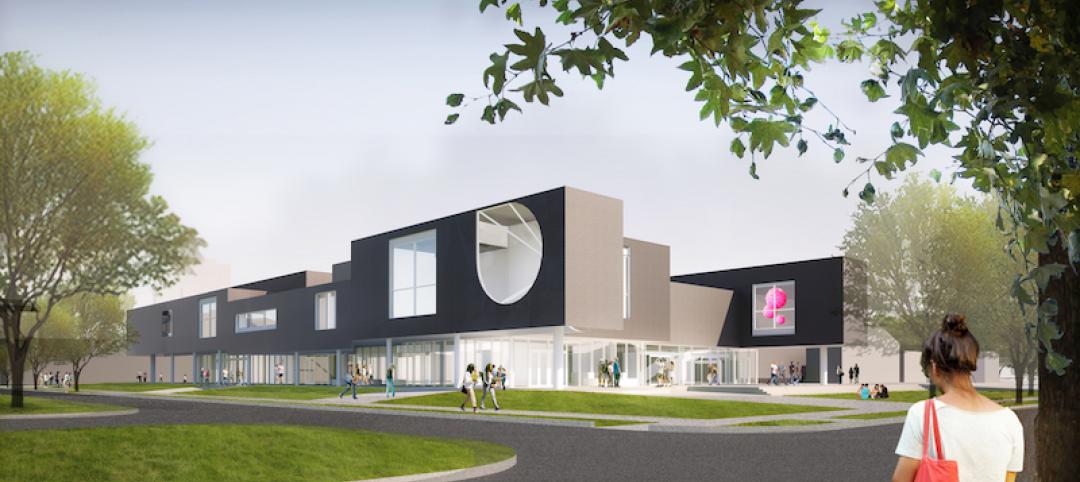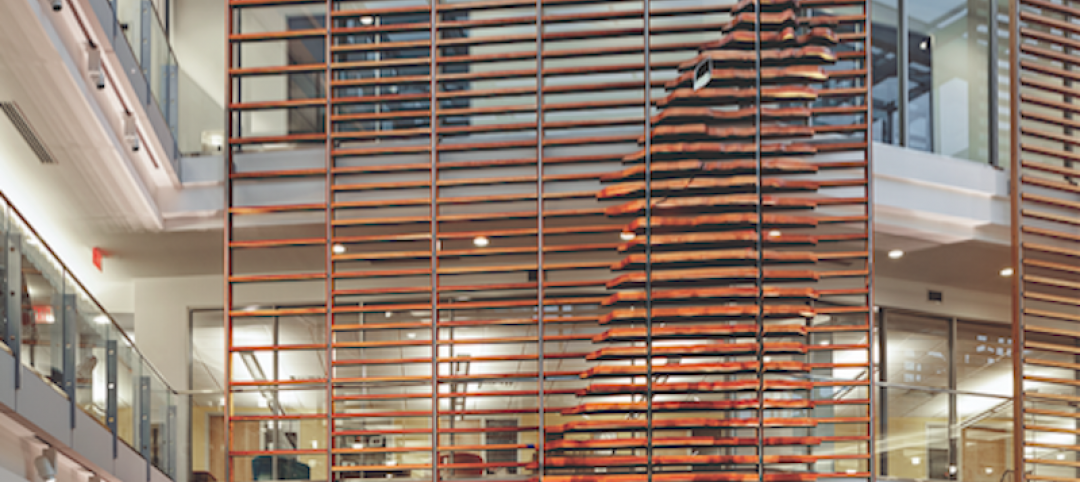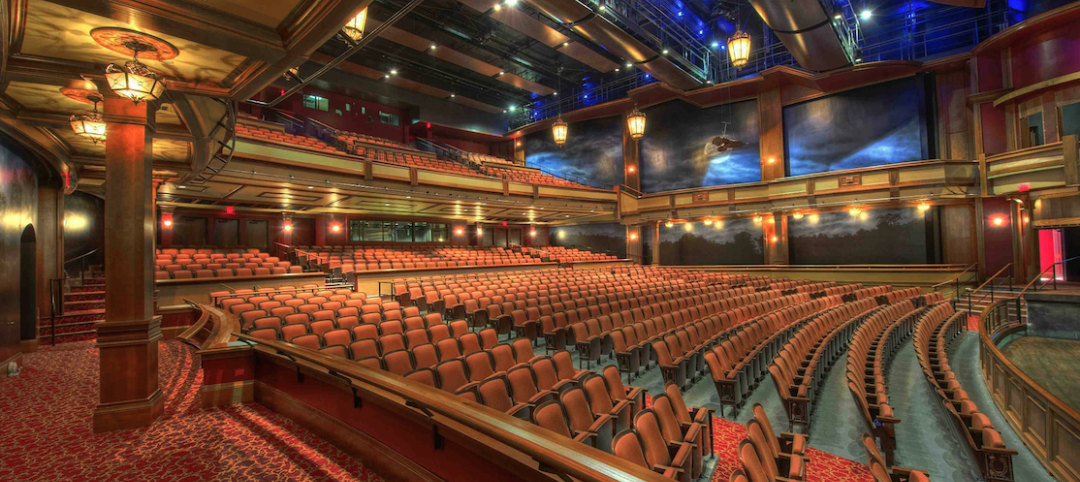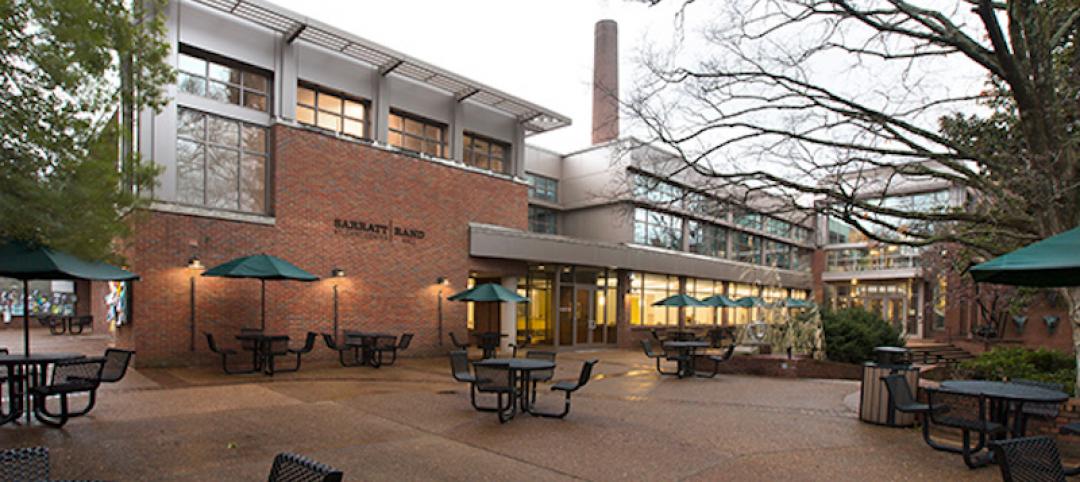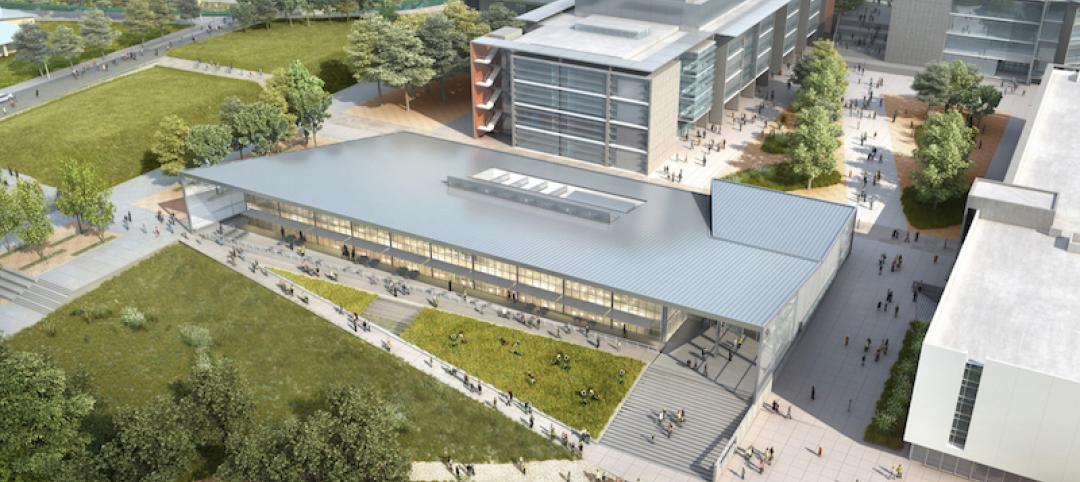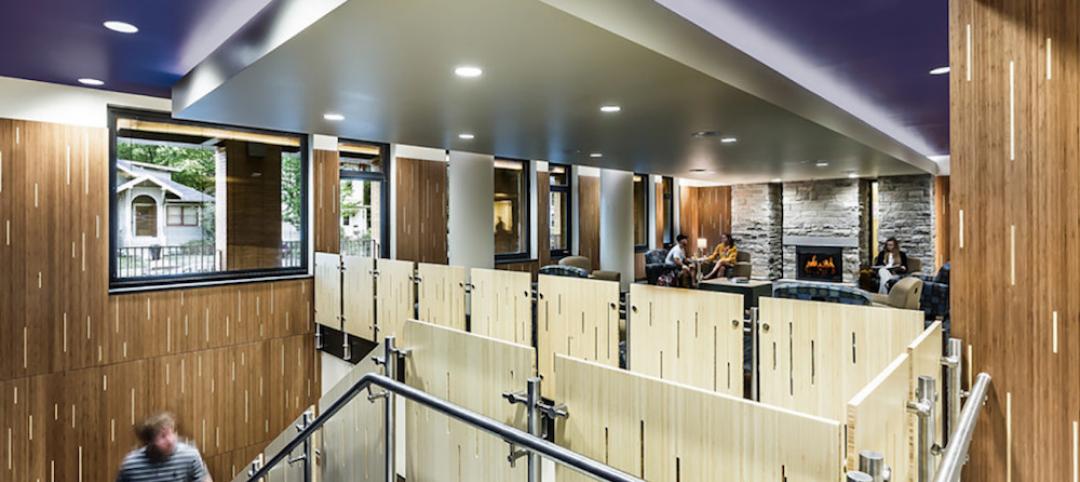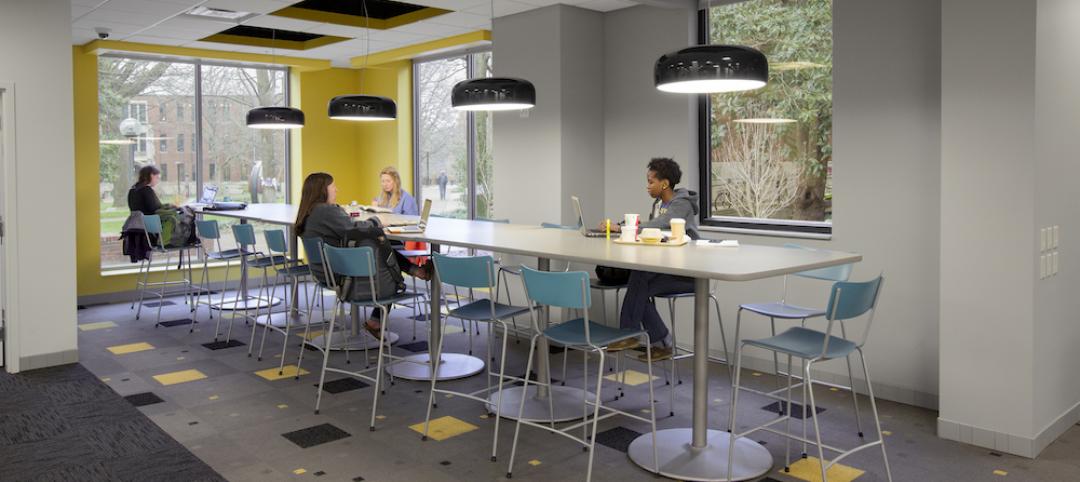The new 96,000-sf Center for Nursing and Health Sciences has recently opened and will act as the new “front door” for St. Louis Community College.
The four-story learning center is comprised of brick and metal panels and solar glass and shading and serves as a welcoming point for vehicle and pedestrian traffic from Oakland Avenue through the campus.
KAI held workshops with the college’s administration, staff, and faculty to create a design that met the needs of the end user. For example, interior spaces were designed for flexibility so they could be transformed into different functions as needed in the future.

The new building includes a dental clinic, surgical technology laboratories, teaching labs, classrooms, computer rooms, study areas, lounges, conference rooms, and office suites. Interior spaces provide opportunities for studying in groups or individually in areas such as seating niches in the corridors, bean bag chairs, and nesting tables.

The interior uses white walls with punches of accent colors on the furniture, lockers, and walls while LEED v4 requirements called for the use of lightly colored, highly reflective materials on the floors, ceilings, and work surfaces.
Approximately 900 students will be servedby the new facility, which consolidates the Forest Park campus’ existing Allied Health programs and also relocates the EMT/Paramedic technology currently offered at another campus.
See Also: The Kennedy Center expands for the first time since its 1971 debut
Tarlton Corp.was the general contractor for the project.

Related Stories
University Buildings | Aug 16, 2016
New images of Rice University’s Moody Center for the Arts revealed by Michael Maltzan Architecture
The arts center will foster creativity for making and presenting works across all disciplines
| Aug 10, 2016
UNIVERSITY GIANTS: Facing money woes, the nation's colleges double down on innovative ideas
Budget constraints are compelling some public institutions to pursue alternative methods of financing their major building projects.
| Aug 9, 2016
Top 70 University Engineering Firms
AECOM, WSP | Parsons Brinckerhoff, and Jacobs top Building Design+Construction’s annual ranking of the nation’s largest university sector engineering and E/A firms, as reported in the 2016 Giants 300 Report.
| Aug 9, 2016
Top 100 University Construction Firms
Turner Construction Co., The Whiting-Turner Contracting Co, and Skanska USA top Building Design+Construction’s annual ranking of the nation’s largest university sector construction and construction management firms, as reported in the 2016 Giants 300 Report.
| Aug 9, 2016
Top 100 University Architecture Firms
Gensler, Perkins+Will, and CannonDesign top Building Design+Construction’s annual ranking of the nation’s largest university sector architecture and A/E firms, as reported in the 2016 Giants 300 Report.
University Buildings | Aug 5, 2016
How to design the best dining facilities for Millennial students
Location, visibility, and adaptability are three important ideas to keep in mind when designing campus dining spaces, writes Gresham Smith and Partners’ Patrick Gilbert.
University Buildings | Jul 22, 2016
Fast-growing UC Merced will double in size by 2020
The state’s Board of Regents has approved a $1.34 billion plan that would add nearly 1.2 million sf of new space.
University Buildings | Jul 6, 2016
University housing of the future will blend life and study
Universities across the country are striving to meet the demand of on-campus housing. VOA's Steve Siegle examines what students and universities desire in campus living, and how designers can respond.
University Buildings | Jun 13, 2016
Renovated Drexel University academic building will welcome students with front porch
A large screen sets a living room vibe for the Philadelphia academic building. Plans call for 9,000 sf of common space on the inside and a new quad on the outside.
University Buildings | Jun 13, 2016
Universities infuse tech features into learning, living, and shopping spaces
Virtual learning rooms, gaming stations, and self-check-out kiosks are among the perks—and necessities—that have all become commonplace in college campus design.



